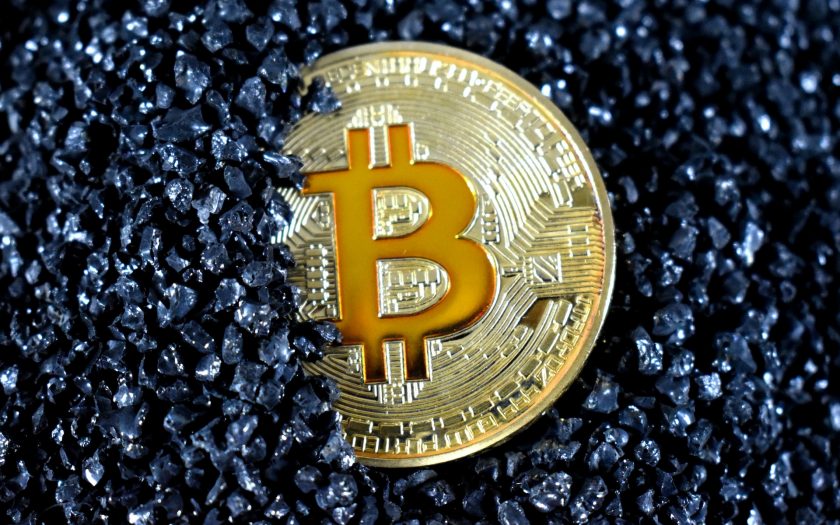
As a long-time crypto skeptic, it may seem odd that I am helping organize a digital assets conference at Duke University on Jan. 20-21. After all, I once wrote a Wall Street Journal op-ed calling for a cryptocurrency ban. While I continue to believe that unbacked cryptocurrencies, like bitcoin, provide no economic utility and impose societal costs that vastly outweigh the benefits, I also recognize that the broader digital asset industry is not going away.
Lee Reiners is policy director at the Duke Financial Economics Center and a lecturing fellow at Duke Law. At Duke, he teaches cryptocurrency law and policy and is a frequent media commentator on cryptocurrency regulation. To learn more about Digital Assets at Duke and to register, see here.
How do I know this? Well, for starters I have been teaching and writing about cryptocurrency and digital assets at Duke for over six years. During this time, the sector continuously evolved and defied all predictions, including mine. This history suggests that those arguing the ongoing crypto winter signals the death knell of crypto will similarly be proven wrong.
I have also spoken with countless Duke students from across campus, including students in our groundbreaking Master of Engineering in Financial Technology program, who are passionate about digital assets and blockchain technology and want to make a career out of it. These students are not motivated by a desire to make a quick buck or buy a Lambo; rather, they find the subject matter intellectually engaging and see an opportunity to get in on the ground floor of a still nascent industry with great potential.
Finally, I know digital assets are here to stay because leading figures and firms from the traditional financial system say so.
Writing in the Wall Street Journal last month, Goldman Sachs CEO David Solomon said that he sees “blockchain as a promising technology” that is already changing how corporations raise money and how investors trade stocks. As evidence, he cites Goldman’s use of blockchain in client-to-client trading platforms and its underwriting of a two-year, 100 million euro digital bond for the European Investment Bank with two other banks, all based on a private blockchain.
Read more: BlackRock CEO’s Crypto About-Face
Also last month, BlackRock CEO Larry Fink said that “the next generation for markets, the next generation for securities, will be tokenization of securities.” We have already seen several high-profile examples of tokenization. Last summer, JPMorgan’s Onyx Digital Assets blockchain-based network transferred tokenized shares in a BlackRock money market fund; in September, private equity giant KKR tokenized shares of a feeder fund for the main KKR health-care fund.
These developments may be a far cry from the “purely peer-to-peer version of electronic cash” envisioned by Satoshi Nakamoto, but they are not nothing. Technology and industries evolve as consumers begin to use the product and express their preferences, and as policymakers adjust the regulatory framework to account for new risks. Despite the strident belief among many that crypto represents a new monetary system untethered from central banks and legacy financial institutions, crypto was destined to evolve, with its underlying technology adopted by the same institutions it was supposed to render obsolete.
As we stand in the ashes of the FTX implosion, now is the perfect time to take stock of crypto’s ongoing evolution and look over the horizon to the potential digital asset use cases that will provide genuine economic utility for the long term. This is why my colleagues and I are hosting Digital Assets at Duke this month.
Digital Assets at Duke is not your typical crypto conference. There will be no sports cars parked out front, no nightclub afterparties and no vendor halls with free swag. Instead, we will harness Duke’s strength in interdisciplinary research and industry collaboration to convene key players in the digital assets industry, regulatory experts, and select researchers for two days of rigorous debate and discussion.
Perhaps no issue is more critical to the future path of digital assets than regulation, and we’ll be hearing from representatives of the two federal agencies at the forefront of this debate. Securities and Exchange Commission Commissioner Hester Peirce has consistently criticized what she considers the agency’s “regulation by enforcement” approach to digital assets and has proposed an innovative safe harbor proposal that would provide developers of decentralized networks with a three-year grace period from the registration provisions of the federal securities laws. Commodity Futures Trading Commission Commissioner Kristin Johnson was a distinguished securities and derivatives law scholar prior to joining the CFTC in 2022. While there, Johnson has repeatedly called for “a whole-of-government or comprehensive regulatory regime to ensure effective customer protections in digital asset markets.”
Stablecoins are one digital asset use case that may potentially reduce current frictions in our payments system and facilitate new transaction models like programmable money and micropayments. Our conference will feature speakers from two leading stablecoin issuers that utilize different business and regulatory models. Circle, issuer of the USDC stablecoin, has a money transmitter license in most U.S. states and the company’s leadership has expressed a desire to become a commercial bank. Circle also recently announced a partnership with BlackRock to move 80% of USDC reserves to a government-only money market mutual fund created by BlackRock, a proposal that has drawn the ire of banking groups. The USDF Consortium is taking a different approach to its yet-to-be issued USDF stablecoin by restricting consortium membership to FDIC-insured banks and working with Figure to issue tokenized deposits on the Provenance blockchain.
The collapse of FTX and other centralized crypto firms over the past year has led to renewed calls by crypto supporters for a return to crypto’s decentralized roots and an embrace of decentralized finance (DeFi). As noted in a recent Federal Reserve Bank of New York blog post, “DeFi protocols appear to have continued to function as intended in 2022 and no protocols have been closed down.” Our conference will dissect DeFi’s performance over the past year and DeFi’s future growth potential in panels on decentralized exchanges and DeFi applications beyond exchanges.
Digital Assets at Duke also features panels on tokenization, central bank digital currency, security and institutional adoption. In sum, the conference will bring together the people and companies that are focused on the development, delivery and regulation of the next-generation digital asset environment.
Related Quotes
Meta Masters Guild (MEMAG) has launched a brand new crypto presale, offering its native token $MEMAG. This gaming guild is on a mission to be the world’s first mobile-focused ecosystem offering a s…
When lawmakers approved the American Rescue Plan in March of 2021, it gave a lot of people a reason to celebrate. Not only did that massive stimulus package allow for a round of $1,400 stimulus checks, but it also gave the Child Tax Credit a major boost. All told, the federal stimulus aid consumers received in 2021 helped many shore up their savings and cope with inflation as it started to soar.
FTX has also identified more than 9 million customer accounts linked to roughly $120 billion associated transactions.
Apple Inc. (AAPL) is working on making touch-screen Macs that could roll out in 2025, Bloomberg reported on Wednesday, citing sources familiar with the matter. Under those plans, which could still change, such a rollout could come as part of a bigger update to the MacBook Pro, according to Bloomberg, which noted that Macs have brought in more sales for Apple than iPads over the past several years. The possible move comes after Apple’s rivals have rolled out computer touchscreens, and despite opposition from the company’s late co-founder, Steve Jobs, Bloomberg noted.
How does this news hit you? #GoBucks
So much for that Tesla stock (TSLA) bounce.
Bank earnings are on tap and the nation’s biggest bank, JPMorgan Chase Co., says its profits on lending soared. But it is now officially expecting a mild recession. + Revenue rose 18% to $34.55 billion. Wall Street was looking for $34.35 billion, according to FactSet. + Profit rose 6% to $11 billion, or $3.57 per share. Analysts expected $3.08 per share. + The bank set aside $1.4 billion for potential loan-losses, as the bank said it is now anticipating a mild recession. A year ago, $1.8 billion
One company has celestial aspirations, while the other is looking to get back its positive momentum.
Pretty much all Warren Buffett has done is win since becoming CEO of Berkshire Hathaway (NYSE: BRK.A)(NYSE: BRK.B) in 1965. Including the 4% gain for Berkshire's Class A shares (BRK.A) in 2022, the Oracle of Omaha has overseen a greater than 3,700,000% aggregate return for his shareholders since taking the reins. With approximately four dozen securities in Berkshire Hathaway's investment portfolio, some are bound to underperform.
Overall, the December CPI report roughly met Street expectations, but there is still a lot of bearish commentary going around right now. Many financial prognosticators are forecasting another tough year for the stock market as the prospect of a recession looms large. However, that is certainly not the view of HSBC's Max Kettner. The strategist points out that the harbingers of doom are unlikely to be surprised by more negative developments with the markets already accounting for the fatalistic o
EV maker Tesla's Shanghai gigafactory expansion is reportedly delayed amid data concerns.
Electric vehicle (EV) stocks are soaring this week. EV maker Lucid Group (NASDAQ: LCID) was up by 30%, charging network company ChargePoint Holdings (NYSE: CHPT) was 24.1% above last Friday's closing price, and solid-state battery maker QuantumScape (NYSE: QS) was rising by 32.1% for the week, according to data provided by S&P Global Market Intelligence. Many growth stocks were rising this week as investors anticipated — and received — tamer inflation data that spurred hopes that the Federal Reserve would slow, or pause, interest rate hikes.
Let's discuss the prospects of three high-yield stocks, which are offering dividend yields above 5% and are attractively valued right now. Thanks to the high dividends of these stocks, their shareholders are adequately compensated while waiting for the stock prices to appreciate. Verizon Communications , which was created by the merger between Bell Atlantic and GTE in 2000, is one of the largest wireless carriers in the U.S. The company generates approximately 75% of its revenue from its wireless business and the remaining 25% from broadband and cable services.
Expensive stocks can have low share prices. Cheap stocks can have high share prices. It might seem counterintuitive, but it's true. Of course, there are also attractively valued stocks that have low share prices.
Stocks were up this week, ahead of today’s inflation data. The gains reflected investor optimism that inflation will continue to scale back – a sentiment that was backed up by the actual numbers. The rate of price increases for December came in at a 0.1% decrease month-over-month, and at an increase of 6.5% annualized. These were exactly in-line with the forecasts, and mark a slowing down of inflation going forward. The slower pace is good news. With this scale-back – inflation’s annualized incr
Riot closed the day almost 15% higher, while Silvergate cruised to a nearly 13% increase. Riot and Silvergate are rather different animals. Silvergate is in many ways a traditional bank but is often lumped in with other crypto assets since its Silvergate Exchange Network (SEN) is a real-time payments platform that services users from cryptocurrency exchanges and institutions.
The business model is quite strong, but unless the broader economy improves, the stock price will not recover
Sometimes, small, under-the-radar stocks are the ones to deliver explosive gains. That's because they often have a very low market value — and a bit of good news easily sends them soaring. But these days, even some top stocks hold potential to skyrocket.
MARKET PULSE Shares of Ford Motor Co. (F) dropped 3.5% in premarket trading Friday, putting them on track for their first loss in 11 sessions, to snap a record-long win streak. The automaker’s stock had soared 22.
(Bloomberg) — Bed Bath & Beyond Inc. is speaking with potential lenders that would finance the company during bankruptcy proceedings, according to people with knowledge of the matter.Most Read from BloombergElon Musk Fan With 2,900% Gain Sees $1.5 Million Wiped AwayUS Inflation Cools Again, Putting Fed on Track to DownshiftT-Mobile Considers Buying Ryan Reynolds’s Mint MobileThe Document That Separates Biden and TrumpUniversal Plans New Family Resort in Texas, Las Vegas Horror AttractionThe tal
 How To Make Huge Profits In A Short Time With Crypto
How To Make Huge Profits In A Short Time With CryptoGet detailed training system that shows an absolute beginner (without any skill) how to make huge profits in a short time with crypto.
 Crypto + NFT Quick Start Course
Crypto + NFT Quick Start CourseThe #1 course for profit in the Crypto & NFT world - You will discover the secrets that 99% of people don’t know yet





